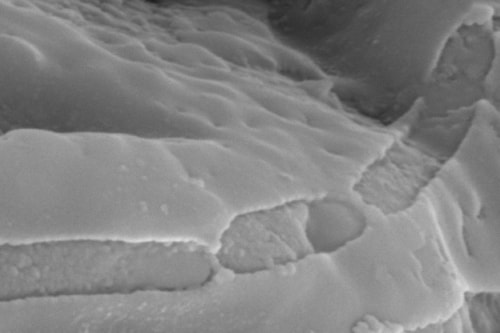Bacteria over three billion years old hiding from the sun in a cave
Fossils in Africa show that ancient bacteria sought refuge in rocky caves from deadly UV rays during the Archean eon when life began to form on Earth.
 |
| Fossilized bacteria in a cave in Africa. Photo: New Scientist |
According to New Scientist, between 2.5 and 4 billion years ago, Earth was scorched by intense UV rays and had no protective ozone layer, just like Mars today.
So surviving on the surface of the planet is a huge challenge for creatures. Some of the Earth's oldest fossil cells, dating back 3.43 billion years, are thought to have lived on sand grains in shallow water or were shielded from UV light by other sand grains.
At the Barberton Greenstone Belt in South Africa - an ancient volcanic area that rose to the surface of the earth - thin layers of rock are covered with 3.22 billion-year-old microbial mats - microbial mats are common and cover the intertidal zone.
These were rod-shaped bacteria that grew in long filaments like many bacteria today.
“Their shapes are quite similar,” said study co-author Alessandro Airo, who and his colleague, lead author Martin Homann of the Free University of Berlin, Germany, analyzed the fossils and published the report on November 16 on the website of the Geological Society of America.
“It seems that by then, they had the ability to biochemically control diameter and length, to create chain connections. Those are things that modern bacteria are doing.”
Previously, Birger Rasmussen at Curtin University announced the discovery of stone bacteria in 2.7 billion year old sediments in Australia.
"This is an exciting discovery. It pushes back the record for finding life on ancient Earth by 500 million years," said Rasmussen.
According to Airo, the atmosphere and UV radiation of Earth more than 3 billion years ago were very similar to Mars today. Understanding how life survived during that time will give us clues about potential life on Mars, and how to detect it.
"The research shows that life can exist very close to the surface of the planet," Airo said. "So microbes can thrive right on the surface of Mars, not necessarily in deep water or underground."
According to VnExpress
| RELATED NEWS |
|---|








